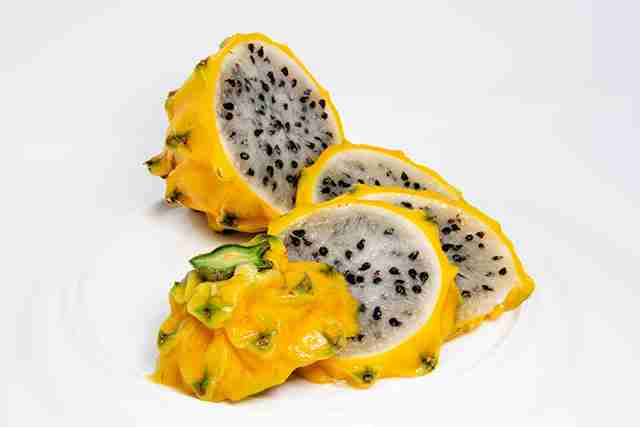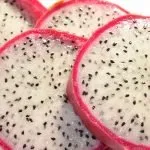When fruit is seasonal, it means it is primarily harvested during a specific time of the year. For dragon fruit (also known as pitaya), harvesting season does not impact the availability of the fruit.
Dragon fruit is in season during the summer, from June to September. The seasonality of fresh dragon fruit does not impact availability, but can impact price. Dragon fruit is available in supermarkets year-round.
If you’re looking for the most affordable months to buy dragon fruit, the end of summer (August – September) would be the best time period to purchase the fruit for cheap in supermarkets.
Dragon Fruit Season
Almost all popular dragon fruit varieties (including white and red) are considered summer fruits. If you’re growing your own fruits in your backyard, the optimal harvesting time would be August or September. The pink color of the skin will tell you when they are ready to be harvested.
The only exception to the rule is the yellow dragon fruit (Selenecereus megalanthus), which is in season during the winter months. Yellow varieties will produce the majority of their fruit from November to February.

Can You Get Dragon Fruit All Year?
It is possible to buy dragon fruit in the supermarket and in specialty fruit shops all year round. Despite the seasonality of the fruit, storage technology allows shops to deliver fresh fruits to their customers all year long.
The only difference throughout the year might be how expensive the fruits are. Cold storage of produce costs money, which will translate into a higher cost. Dragon fruit will be the cheapest when it is in season, or when it is barely out of harvest season.
Similar patterns can be seen for most types of seasonal fresh fruits. Most tropical fruits will be imported from other countries, and the location of the cheapest produce will change over time. The label on the product will usually tell you which country your fruits were produced in.
Seasonality Will Impact Dragon Fruit Cost
Buying fresh dragon fruit in the supermarket is usually not very cheap. How expensive your dragon fruit will be, depends on a number of factors (including the time of year). Here’s what determines the price of dragon fruit in the shop:
- Seasonality: Late summer or early fall will have the cheapest dragon fruits due to the harvesting season. The only exception is the yellow dragon fruit, which will mainly be harvested in wintertime.
- Country of origin: Supermarkets often rotate where they get their fresh produce from. Local climate, weather conditions, as well as possible pests are factors that impact price. This will determine where the cheapest pitayas are found.
- Size: The cost of fresh fruit is usually determined by weight. Sometimes they might be sold by piece, if there is a batch with evenly sized pitayas for example. More weight logically means a higher price.
- Ripeness: Very ripe dragon fruit needs to leave the shop as soon as possible, this can lower the price. Unripe dragon fruit can be stored longer, so it might cost more when you buy it.
In the USA, a single white dragon fruit will usually cost between $5 and $6 USD. This is the average cost provided by Walmart, which might differ depending on your state or location.
Remember that the average costs of fresh fruits are likely to change throughout the year, depending on their availability and seasonality. From an American perspective, you can imagine that local produce will cost a lot less than a tropical fruit grown in Southeast Asia.
Seasonal Fruit, Year-Round Availability
With improved storage technology for fresh produce, supermarkets are able to offer seasonal fruits throughout the year. This will mean that they’re technically not fresh, but they are essentially ‘frozen in time’ until they are offered in the supermarket.
The special pink-colored fruits have a relatively long storage time, mainly because they can be easily stored in the fridge and freezer. The characteristic pink skin will only show once dragon fruit is starting to ripen.
That’s when the fruits are offered in the supermarket, almost ready to be consumed. They won’t rot or smell bad yet, because the ripening process is slowed down by cooling and drying procedures in storage facilities. A really cool innovation that allows us to eat delicious tropical fruit year-round!



